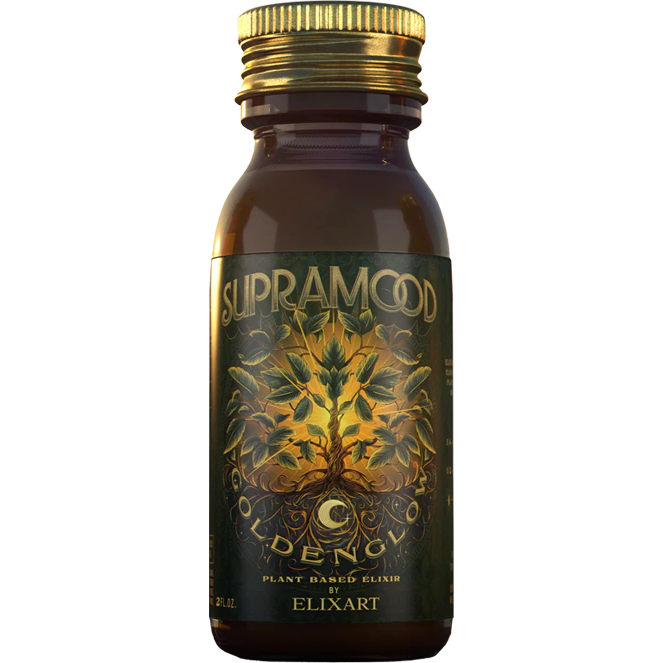Table of Contents
- Introduction to the Kava vs. Kratom Comparison
- What Is Kava vs Kratom?
- What Is the Difference Between Kava and Kratom?
- Kava vs Kratom: Important Differences You Need to Know
- Kratom vs. Kava: A Comparative Study
- Kava vs Kratom: Effects and Feelings
- Kava vs Kratom: Health Impact and Safety
- Kava vs Kratom: Real‑World Products and Use Cases
- Kratom Kava Bar
- Conclusion
- FAQs
Introduction to the Kava vs. Kratom Comparison
Picture this: you walk into a cozy, dimly lit lounge where people sip earthy drinks from handcrafted bowls. Someone calls this place a kratom kava bar, and rumors say it helps with sleep, lifts mood, and even eases pain. But amidst the hushed conversations about "calm," "energy," and "euphoria," one question keeps floating around: What is the difference between kava and kratom?
In this blog, we’ll explore these two natural botanicals with all the care they deserve. Think of this as a laid-back talk, a curious guide walking you through a forest of information, shining a flashlight on the path ahead. By the end, you’ll confidently know which one might align with your needs, backed by real science, human experiences, and cultural history.
Key Takeaways
- Different plants, different chemistry: Kava is a pepper-family root; kratom is a coffee-family leaf.
- Effects vary: Kava is calming and sedative, while kratom can energize or relax depending on the dose.
- Legality diverges: Kava is broadly legal; kratom has a mixed and regulated status.
- Kava offers better sleep and anxiety relief; kratom provides pain management and mood stimulation.
- Health risks differ: Kava impacts the liver more, while kratom carries addiction potential.
- Neither is a miracle cure: always be informed and cautious.
What Is Kava vs Kratom?
Both have ancient roots and modern popularity, but they couldn’t be more different.
Kava (from Piper methysticum) is native to the South Pacific-Fiji, Vanuatu, Fiji, and Tonga. Traditionally, communities used kava in formal ceremonies, social gatherings, conflict resolution, and even to welcome guests. The root is usually ground and mixed with water to create a thick, earthy beverage that numbs the mouth slightly, something akin to sipping mud with a purpose.
Kratom (Mitragyna speciosa) grows in Southeast Asia, Thailand, Indonesia, and Malaysia. Farmers and laborers chewed it to boost energy, lift endurance, and reduce pain during long working days. It was a daily ritual, a comfort, and a survival tool rolled into one.
What Is the Difference Between Kava and Kratom?
Kava and kratom are both plant-based substances used for their calming or mood-altering effects, but they differ significantly. Kava, made from the root of the kava plant, is primarily used for relaxation and anxiety relief without affecting alertness. Kratom, derived from the leaves of a Southeast Asian tree, can have stimulant or opioid-like effects depending on the dose. While kava affects GABA receptors in the brain, kratom acts on opioid receptors, leading to different risks and benefits.
Kava vs Kratom: Important Differences You Need to Know
|
Feature |
Kava (Kava Root) |
Kratom (Mitragyna speciosa) |
|
Origin |
South Pacific Islands |
Southeast Asia |
|
Plant Part |
Root |
Leaf |
|
Active Compounds |
Kavalactones |
Alkaloids (mitragynine, 7‑hydroxymitragynine) |
|
Typical Effects |
Calming, sedative, social ease |
Stimulating at low dose; sedating at high dose |
|
Legal Status |
Mostly legal with some regional restrictions |
Varies widely, legal in some U.S. states; banned in others |
|
Addictive Potential |
Lower – mild dependency possible |
Moderate to high opioid-like dependency |
|
Traditional Use |
Ceremonial, social, easing nerves |
Labor aid, pain relief, and motivation |
Kratom vs. Kava: A Comparative Study
Kava is mainly used for relaxation and anxiety relief, while kratom is sought for pain relief and stimulation. Their effects, risks, and legal status vary, making them suited for different use cases.
Botanical Classification
Kava: Root of a pepper relative, part of the Piperaceae family.
Kratom: Leaves of a coffee relative in the Rubiaceae family.
Active Compounds
Kava: Contains kavalactones, which modulate GABA receptors, key players in anxiety relief and muscle relaxation.
Kratom: Loaded with mitragynine and 7-hydroxymitragynine, alkaloids that bind to opioid and adrenergic receptors, influencing mood, pain, and energy.
Effects and Dosing
Kava: The Main effects are relaxation, mental calm, and mild sedation.
Kratom: Low dose, energizing, and mood-enhancing. High dose, pain relief, and sedation.
Legality and Regulation
Kava: As far as the Kava legality is concerned, it is legal in most Western parts of the world. Some regions impose restrictions due to concerns about liver health.
Kratom: Legal status varies dramatically. Banned or regulated in several U.S. states, and classified as controlled in multiple countries.
Consumption Styles
Kava: Traditionally brewed into tea; now available in capsules, powders, concentrates, tonics as Goldenglow and mixed drinks at specialty bars.
Kratom: Commonly used in powdered form (toss-and-wash), capsules, teas, or infused into beverages and gummies.
Cultural and Historical Background
For Pacific Islanders, kava has been part of communal identity. It's given by chiefs to build social cohesion; it's offered in rituals to soothe the soul. Meanwhile, kratom in Southeast Asia was more pragmatic, chewed by farmers and motorcycle taxi drivers to push through the day and lessen bodily discomfort.
Modern Popularity Trends
Kava saw its modern revival through specialty bars and wellness cafes. You’ll encounter “kava lounges” in major cities, offering calming, social settings, think herbal mocktails with an earthy kick. Kratom, conversely, surged in the dietary supplement market in the 2010s as a natural painkiller and mood enhancer but earned scrutiny due to dependency and safety concerns. Today, it’s under more regulation, yet still prevalent in niche shops and online stores.
Kava vs Kratom: Effects and Feelings
Kava promotes calmness and reduces anxiety without clouding the mind. Kratom acts as a stimulant in low doses and provides sedative or euphoric effects in higher doses. Their effects differ based on how they interact with brain receptors.
Does Kava Have the Same Effect as Kratom?
The short answer? Not even close.
Kava is like a cozy blanket for your mind and body. You’ll feel tension loosened, mental noise quieted, and a subtle wave of tranquility. It’s not a mind-altering substance, or at least not in a strong or uncomfortable way. Some people report a gentle mood uplift, a sense of being more socially at ease without feeling zoned out.
Kratom, especially in low doses, brings a different kind of glow: awake, alert, chatty, maybe even creative. At higher doses, it can drift into sedation, but of a heavier, more narcotic character than kava’s gentle calm.
Which Is More Euphoric, Kava or Kratom?
If you're chasing a mood boost, kratom is the more potent option. Its ability to engage opioid receptors explains why users might describe a soft euphoric rush, calming but also confidence-boosting, mood-enhancing, and even motivational.
Kava, by contrast, offers milder, cleaner euphoria, if it’s there at all. It doesn’t hit like a high; instead, it smooths the edges of stress and anxiety, giving a grounded sense of well-being.
Is Kratom or Kava Better for Sleep?
For better sleep and winding down rituals, kava is typically the front-runner. The calming effect is direct, and it’s a beloved choice for natural insomnia support. Some users enjoy a kava drink about an hour before bed to signal relaxation to the body.
Kratom does help with sleep, but mainly at higher, sedative doses. That level also brings a higher risk of dependency and morning grogginess due to its opioid-like effects. So, for quality rest with fewer trade-offs, kava takes the lead.
Is Kava More Addictive Than Kratom?
In general, kratom has a higher addictive potential. Its opioid receptor activity can quickly lead to tolerance, cravings, and withdrawal symptoms if consumed regularly. Psychological dependency is real, even in people who started with low doses.
Kava might cause mild dependency if used daily, but physical addiction is rare. The larger risk comes from liver health issues, not from craving or withdrawal.
Kava vs Kratom: Health Impact and Safety
Kava may cause liver damage with excessive use, but it's generally safe in moderation. Kratom carries higher risks, including dependency, withdrawal, and potential heart or liver issues.
Liver Toxicity
Kava has been linked to liver toxicity in some studies, though often cases were tied to high doses, non-traditional extraction methods, or combination with alcohol or medications. Still, it's wise to limit load and consult a doctor if you have pre-existing liver conditions.
Kratom’s direct liver impacts are less documented, but it does strain organ function in susceptible individuals. However, its dependency risk and potential for misuse make overall safety a greater concern.
Kava vs Kratom for Pain
When it comes to pain, kratom shines. Its alkaloids act similarly to opioids, reducing physical discomfort and sometimes reducing inflammation. Whether it's sore joints, chronic muscle tension, or general fatigue, many users find meaningful relief with moderate kratom use.
Kava can help with mild discomfort, muscle knots, tension headaches, and PMS cramping, but isn’t known to handle severe or chronic pain. It acts more as a relaxant, indirectly easing discomfort rather than blocking pain signals.
Kava vs Kratom for Anxiety
For anxiety relief, kava is the more researched and traditional choice. Clinical studies have found similar potency to low-dose benzodiazepines without the same addictive properties. It promotes calm and emotional clarity.
Kratom users often report anti-anxiety benefits, but anecdotes vary and depend heavily on the dose. Sometimes, particularly at providing stimulation, it can increase anxiety, especially in sensitive individuals or when tolerances build.
Kratom vs Kava Weight Loss
Neither is a magic bullet for shedding pounds.
Kratom’s stimulant effects might help slightly reduce appetite or boost metabolism, but the effect is small and unreliable. Weight-loss claims based on this use should be viewed skeptically.
Kava is more about relaxation, even calming your digestive system. It won’t curb cravings; in fact, a relaxing downshift might make you snack more.
If weight loss is your goal, focus on proven strategies like diet and exercise, and treat kratom or kava as supplements, not solutions.
Kava vs Kratom: Real‑World Products and Use Cases
Kava is often used in teas or capsules for stress relief and social relaxation. Kratom appears in powders or extracts, commonly used for pain relief or energy boosts.
You’ll find these two in many forms today:
Kava: Traditional powder, instant powders for quick drinks, capsules, tinctures, and even "kava cocktails" at specialty lounges.
Kratom: Powders for toss-and-wash, gelatin capsules, gummies, tinctures, and tea blends.
Hybrid Products: Some brands combine kratom with synergistic herbs (e.g., turmeric for pain, and valerian for sleep) to extend benefits.
Experience varies based on strain, dose, and user sensitivity. Always start low, observe the effects, and never exceed recommended amounts without medical guidance.
Kratom Kava Bar
A kratom kava bar is part lounge, part wellness cafe, and part community hub. Here's what to expect:
Atmosphere:
Comfortable seating, ambient lighting, often with live music or open mic nights.
Menu:
Bowls or shots of kava, kratom-infused teas, smoothies, and sometimes light snacks.
Consultation:
Staff usually help beginners choose strains and dosages and understand their effects.
Community Vibes:
Unlike a noisy bar, this is a place to reflect, chill, or have a focused conversation.
These bars bridge ritual and relaxation, offering both social interaction and personal well-being.
Conclusion
Kava and kratom may often be talked about in the same breath, but the more you dive into their origins, chemistry, effects, and risks, the clearer their differences become.
Kava is like a gentle friend who helps you unwind after a long day, relaxing your body, easing your mind, and letting you ease into sleep or social calm. It’s deeply rooted in tradition and often shines when you're seeking peace, clarity, or relief from anxiety.
Kratom, on the other hand, is the powerful motivator, the natural energy jolt or pain reliever that can offer a lift when you’re struggling with fatigue or chronic discomfort. It has its own cultural legacy and unique benefits, but comes with a louder warning label, particularly around dependence and regulation.
So, when someone asks, “What is the difference between kava and kratom?”, you can now confidently answer: they’re both natural, yes, but they walk very different paths. And which one is “better” depends on where you are on your journey, whether you’re looking for peace of mind or pain relief, social ease, or a pick-me-up.
Whatever your choice, approach it with awareness. Nature is powerful. The more informed you are, the better you’ll be at using these gifts wisely.
For those who appreciate the benefits of both, Supramood offers a thoughtfully balanced experience, blending the calming essence of kava with the energizing qualities of kratom in a single, real-world solution. For those who appreciate the benefits of both, GoldenGlow stands out as one of the best product experiences, combining the essence of kava and kratom into one balanced, real-world solution.
Frequently Asked Questions (FAQs):
Which one is more stimulating, kava or kratom?
Kratom, at low doses, provides noticeable energy and motivation. Kava primarily relaxes.
Is kava or kratom better for sleep?
Kava is generally better for promoting restful sleep due to its calming nature, while kratom can help more at high sedative doses, but with more side effects.
Does kava feel like kratom?
No, kava makes you relaxed and mellow, while kratom can be energizing or sedating, depending on the dose.
Which is more euphoric: kava or kratom?
Kratom typically offers stronger euphoria; Kava’s mood lift is gentler and more soothing.
Can kava or kratom help with pain relief?
Kratom is more effective for pain due to its opioid-like properties. Kava helps more with comfort and tension relief.
Do kratom or kava have more side effects?
Kratom has higher dependency and withdrawal potential. Kava carries liver health concerns.
Are kava and kratom addictive?
Kratom is more likely to cause dependency; kava has a lower risk of addiction.
Which is more natural or plant‑based: kratom or kava?
Both are fully natural, plant-derived, and steeped in traditional herbal practices.






Leave a comment
All comments are moderated before being published.
This site is protected by hCaptcha and the hCaptcha Privacy Policy and Terms of Service apply.